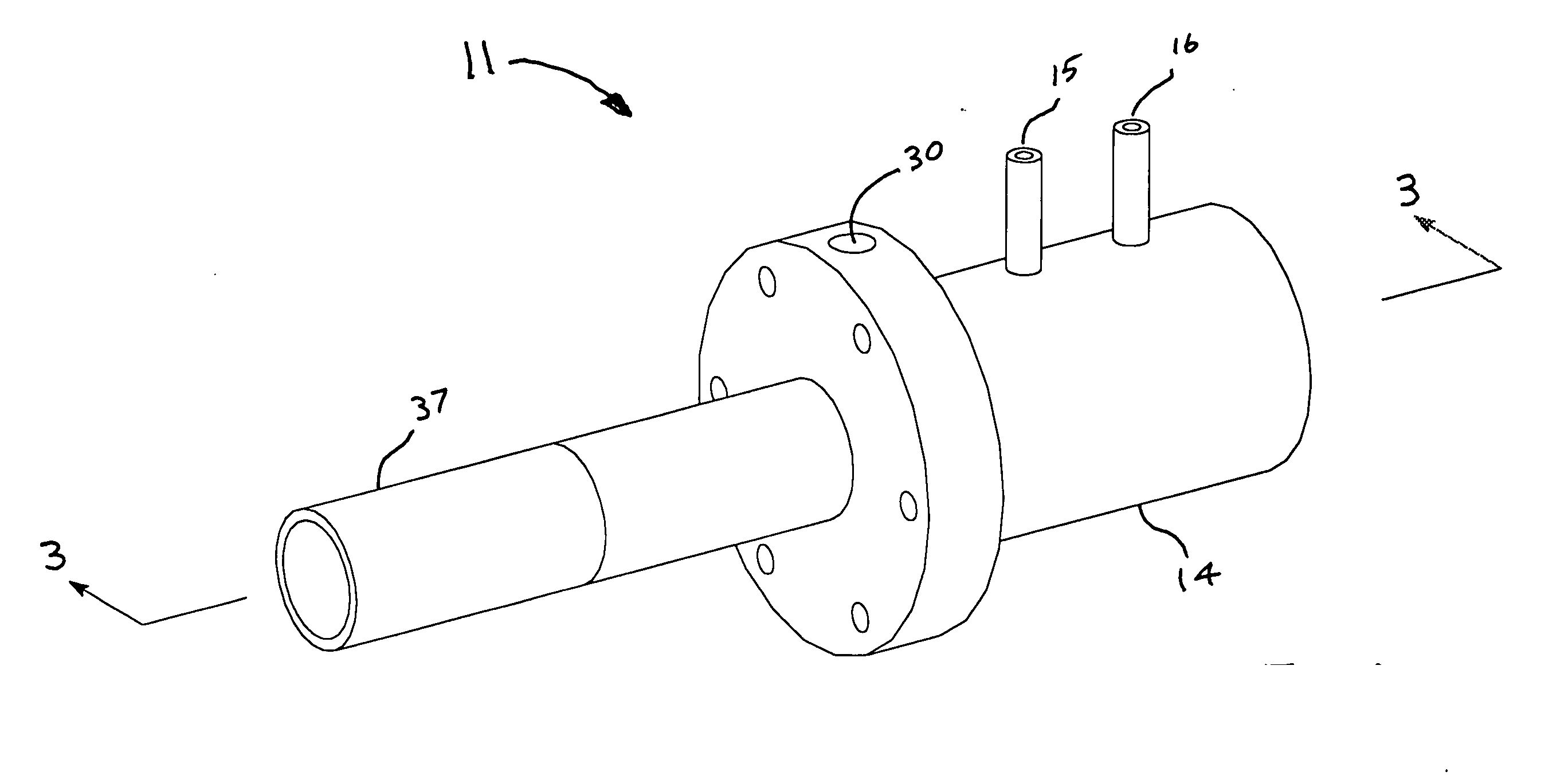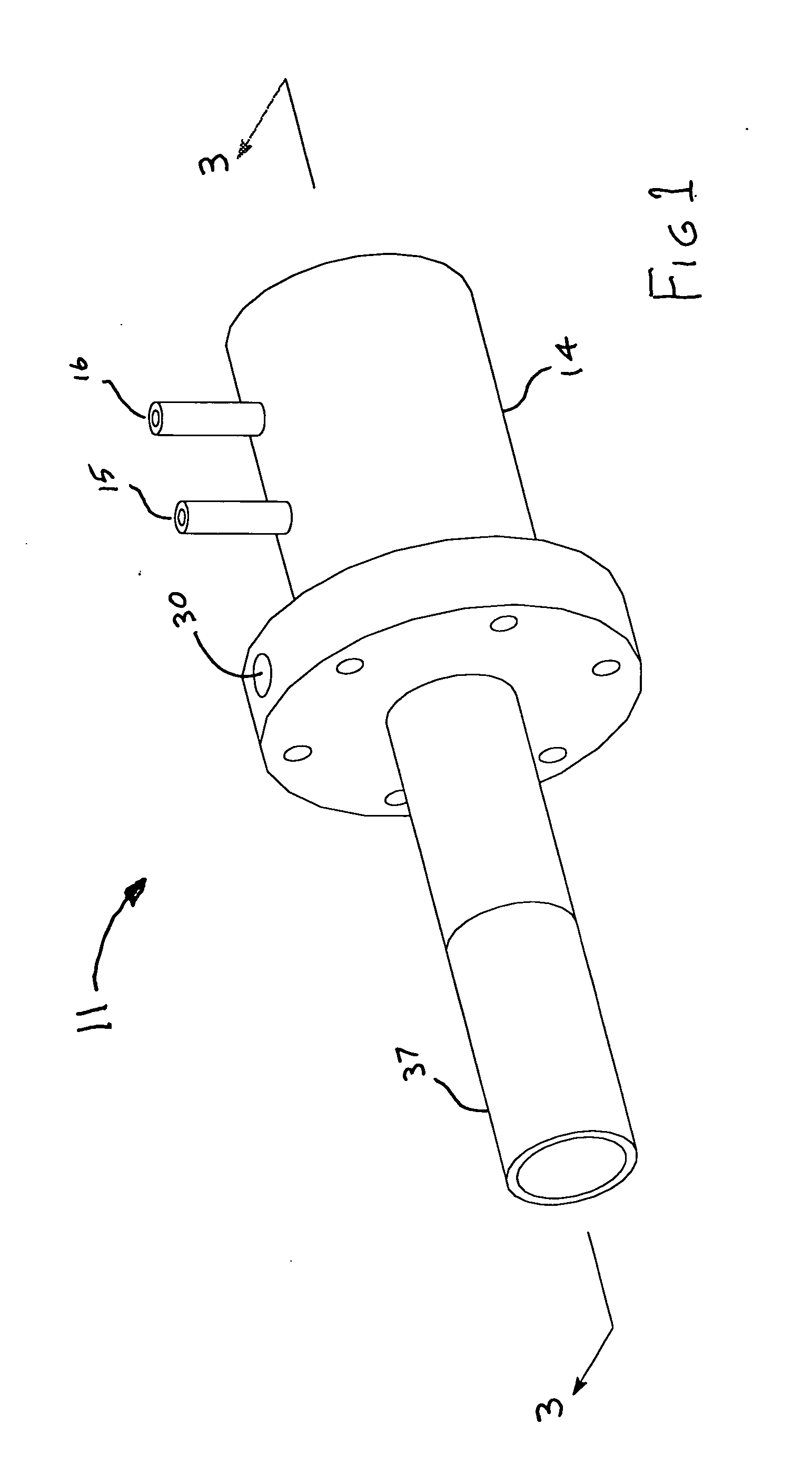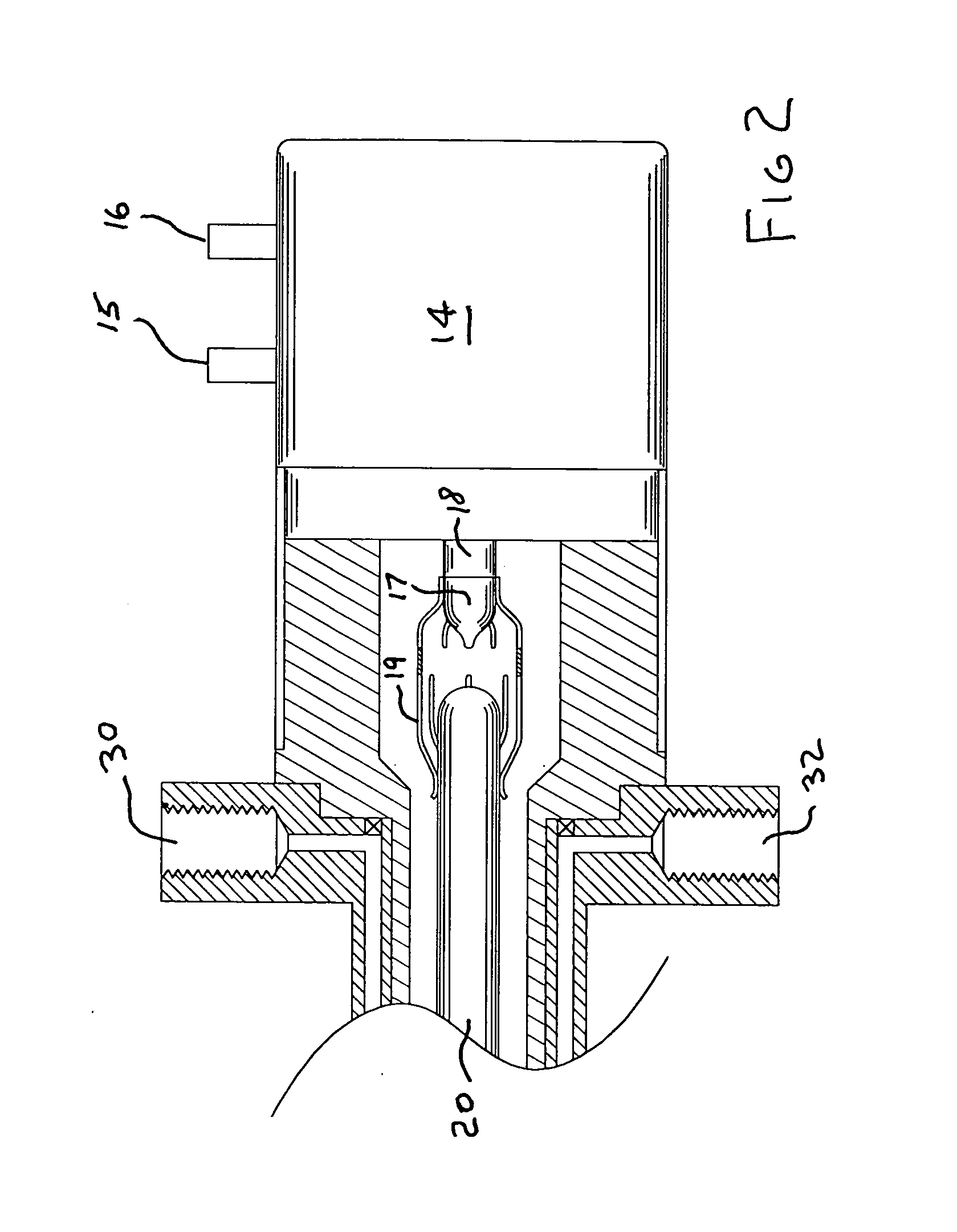Directly connected magnetron powered self starting plasma plume igniter
- Summary
- Abstract
- Description
- Claims
- Application Information
AI Technical Summary
Benefits of technology
Problems solved by technology
Method used
Image
Examples
Embodiment Construction
[0029]FIG. 1 depicts a trimetric view of a first embodiment 11 of the invention. The embodiment shown is a “straight through” configuration, as opposed to the right angle version depicted in FIG. 8.
[0030]FIG. 2 shows a partially sectioned side view of the magnetron end of the igniter shown in FIG. 1. Magnetrons having a power output rating in the range between 600 watts and 2 kilowatts are preferred, but powers outside this range may be used, if desired. Rated power in the preferred range provides an adequately robust plasma for most uses, without dissipating excessive heat. More preferred yet is a magnetron having a power output rating of 1.3 kilowatts. A frequency of about 2.45 GHz, which is a commonly used frequency for magnetrons, has been found to function well.
[0031] Substantial heat is generated by magnetrons, and external cooling is generally required. The preferred form of cooling is by liquid flowing through cooling coils within the magnetron, but other forms of cooling ...
PUM
| Property | Measurement | Unit |
|---|---|---|
| Mass | aaaaa | aaaaa |
| Pressure | aaaaa | aaaaa |
| Angle | aaaaa | aaaaa |
Abstract
Description
Claims
Application Information
 Login to View More
Login to View More - R&D
- Intellectual Property
- Life Sciences
- Materials
- Tech Scout
- Unparalleled Data Quality
- Higher Quality Content
- 60% Fewer Hallucinations
Browse by: Latest US Patents, China's latest patents, Technical Efficacy Thesaurus, Application Domain, Technology Topic, Popular Technical Reports.
© 2025 PatSnap. All rights reserved.Legal|Privacy policy|Modern Slavery Act Transparency Statement|Sitemap|About US| Contact US: help@patsnap.com



